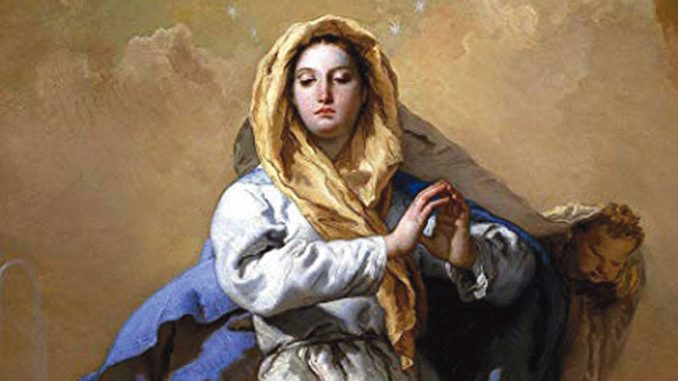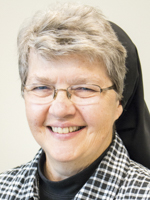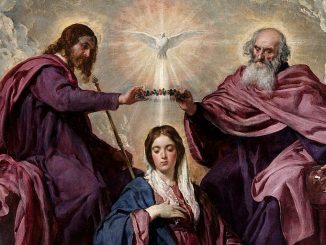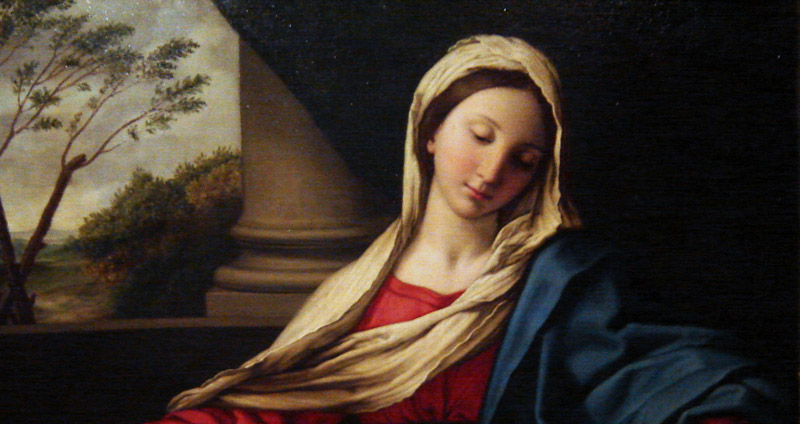
Twin young men, juniors at the University of Wisconsin, recently gained attention as American Ninja Warriors. One made it up the zany, curved wall and hit the button. That accomplishment gained considerable notice because of their distinct rookie status and also because of their cause. They were participating in the strenuous games to honor their mother, a victim of breast cancer who never made it to her 50th birthday.
A segment that previewed their gamut-run showed the two boys at her grave, placing flowers and telling her that they were dedicating their Ninja feats to her.
If anyone ever wanted a parable to help explain Catholic and Orthodox devotion to the Blessed Mother, the twins presented the perfect one. Human beings who have even a smidgen of belief in the afterlife feel a connection with their beloved dead. When it comes to parents, we have a sense that they continue to watch over us with love and care and that they intercede on our behalf. From eternity, we trust that they can reach down and help us and that they appreciate the ways in which we honor and remember them.
My sister, Barbara, posted pictures of my mother on Facebook on June 19th. It would have been her 102nd birthday. On a recent writing workshop-retreat, I wrote a poem about my mother’s enthusiasm for backyard bird-watching. I’ve also made timely requests to her for heavenly help.
When it comes to the Blessed Mother, then, we should not be surprised at the multiplication of solemnities, feasts, and memorials celebrated by the universal Church. We also should not be stunned by the varied devotions, litanies, statues, and paintings which she has inspired. We see her as our Mother, and so she looks like a native Aztec as well as the Book of Revelation’s woman clothed with the sun when we see Our Lady of Guadalupe. She looks Italian as the Madonna of the Streets. She appears as a slim Rwandan in images of Our Lady of Kibeho. And on it goes.
We look to her for motherly love. So, not surprisingly, she is health of the sick, refuge of sinners, queen of peace. We can trace fascination with Mary far back. The Council of Ephesus in 431 A.D. validated devotion to her under the title Mother of God, reasoning that if Jesus Christ is both true God and true man — a matter of faith — she can legitimately be called “Theotokos,” God-bearer. The declaration also validated popular devotion to her, something traceable much farther back than that council. We recall in Scripture the bestowal of Mary to the care of John, and John to the care of Mary at the foot of the cross. The Acts of the Apostles records that she was in the Upper Room as the disciples awaited Pentecost. Mary is a Spirit-Gift to us.
An antiphon for Lauds on July 16, the day dedicated to Our Lady of Mount Carmel, says, “I have openly sought wisdom in my prayers, and it has blossomed like early grapes.” Perhaps this July the Seat of Wisdom will help us get an extra dose of that badly needed gift.




